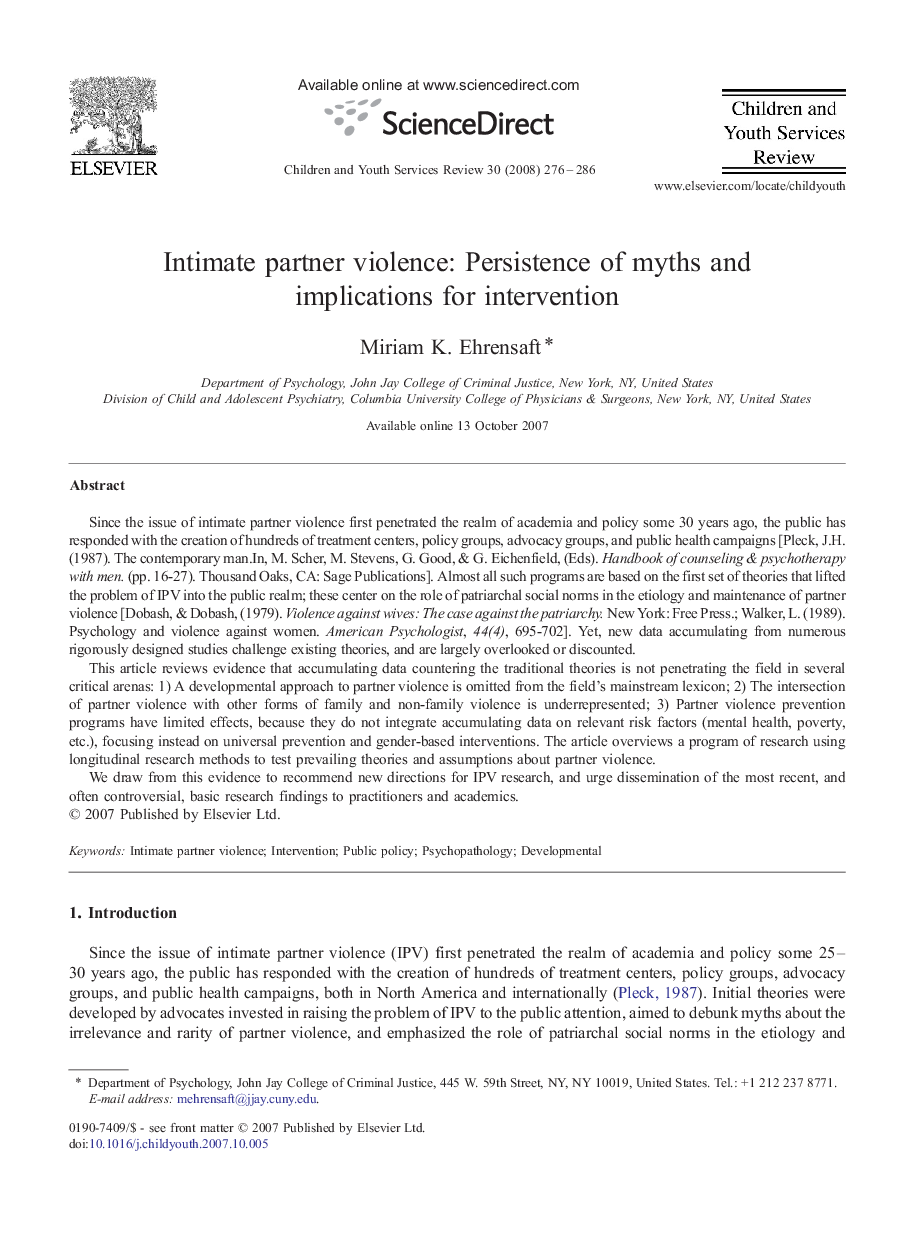| Article ID | Journal | Published Year | Pages | File Type |
|---|---|---|---|---|
| 347250 | Children and Youth Services Review | 2008 | 11 Pages |
Since the issue of intimate partner violence first penetrated the realm of academia and policy some 30 years ago, the public has responded with the creation of hundreds of treatment centers, policy groups, advocacy groups, and public health campaigns [Pleck, J.H. (1987). The contemporary man.In, M. Scher, M. Stevens, G. Good, & G. Eichenfield, (Eds). Handbook of counseling & psychotherapy with men. (pp. 16-27). Thousand Oaks, CA: Sage Publications]. Almost all such programs are based on the first set of theories that lifted the problem of IPV into the public realm; these center on the role of patriarchal social norms in the etiology and maintenance of partner violence [Dobash, & Dobash, (1979). Violence against wives: The case against the patriarchy. New York: Free Press.; Walker, L. (1989). Psychology and violence against women. American Psychologist, 44(4), 695-702]. Yet, new data accumulating from numerous rigorously designed studies challenge existing theories, and are largely overlooked or discounted.This article reviews evidence that accumulating data countering the traditional theories is not penetrating the field in several critical arenas: 1) A developmental approach to partner violence is omitted from the field's mainstream lexicon; 2) The intersection of partner violence with other forms of family and non-family violence is underrepresented; 3) Partner violence prevention programs have limited effects, because they do not integrate accumulating data on relevant risk factors (mental health, poverty, etc.), focusing instead on universal prevention and gender-based interventions. The article overviews a program of research using longitudinal research methods to test prevailing theories and assumptions about partner violence.We draw from this evidence to recommend new directions for IPV research, and urge dissemination of the most recent, and often controversial, basic research findings to practitioners and academics.
